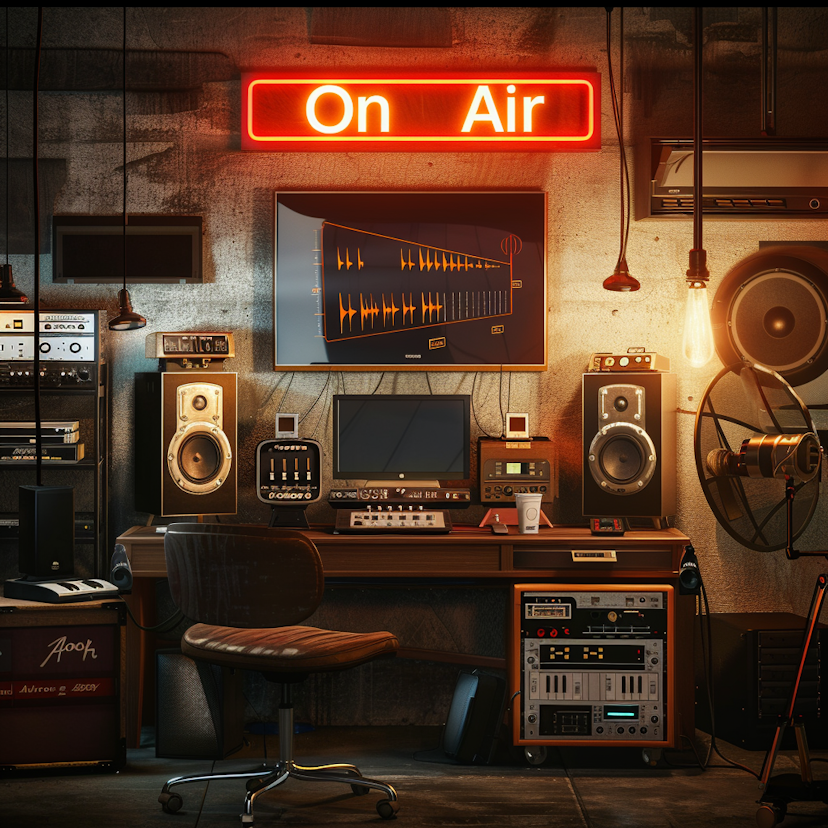You’ve been grinding for weeks—researching stations, perfecting your pitch, sending out your track with a mix of hope and doubt. Then it happens: a station replies. They’ve played your song!
At first, it’s exhilarating. But days turn into weeks, and as you comb through your stats—streaming numbers, follower counts, even Google searches—there’s nothing. No signs of life. You start questioning if the spin even happened.
“What’s the point of getting airplay if I can’t see whether it’s doing anything for my music?”
The Independent Artist’s Dilemma
Data rules everything in today’s music industry. It’s the lifeblood of marketing, strategy, and growth. Yet when it comes to radio airplay, indie musicians are often left fumbling in the dark. Without the tools or budget to access airplay reports, tracking the impact of spins feels like trying to catch wind in your hands.
This isn’t just a minor inconvenience—it’s a deep, systemic issue that sidelines independent artists.
Why Tracking Airplay is Nearly Impossible
- The System Favors Big Players
Industry-standard airplay monitoring services like Nielsen BDS or Mediabase cater to major labels and those who can afford steep subscription costs.
- “Unless you’ve got deep pockets, these tools are completely out of reach.”
- Smaller Stations Are Low-Tech
The indie-friendly stations most accessible to unsigned artists often lack the infrastructure to log or report spins.
- “If the stations I’m targeting can’t even track my airplay, how am I supposed to?”
- Listeners Don’t Always Take Action
Even if someone hears your song on the radio, they might not rush to Spotify or Shazam it. Without clear cues—like the DJ announcing your name—your track risks becoming background noise.
- “If they don’t know who I am, how can they even find me?”
- No Unified Reporting System for Indies
Major label artists have streamlined access to airplay data, while independent musicians are left piecing together scraps of information.
- “It feels like we’re playing a game that wasn’t built for us to win.”
How the Lack of Data Hurts
The inability to track airplay doesn’t just limit your strategy—it chips away at your confidence. Every unverified spin feels like a phantom victory. You start doubting your efforts, questioning if you’re wasting your time.
“Am I just screaming into the void while no one’s listening?”
This constant uncertainty can make even the most dedicated artist second-guess their path.
Taking Control: Strategies to Bridge the Gap
Although the current system feels stacked against you, there are steps you can take to reclaim some control and measure your progress more effectively.
1. Use Budget-Friendly Airplay Tools
Explore accessible tools designed for indie artists:
- Radio Airplay Tracker: Affordable basic airplay tracking.
- Radiowave Monitor: Tracks spins from smaller stations globally.
- SongTracker: Specifically built for indie musicians. These platforms might not be perfect, but they can provide a starting point.
2. Develop Relationships with Stations and DJs
DJs and station managers often appreciate personal outreach. A friendly email asking for feedback—or even an airplay confirmation—can go a long way.
- “They’re people, not algorithms. Build those human connections.”
3. Monitor Related Metrics
Look for indirect signs of airplay success:
- Web Traffic: Did your website see a spike around your airplay date?
- Social Mentions: Set up alerts for your name or song title.
- Streaming Increases: Even small jumps might hint at exposure. These clues, while imperfect, can help connect the dots.
4. Direct Listener Action
Make it easy for listeners to find and follow you. Ask stations to plug your social handles or add a memorable call-to-action:
- “Love this track? Search [Artist Name] on Spotify!”
5. Keep Detailed Notes
Track when and where your song was played, then compare it to engagement data. Over time, patterns will emerge, helping you refine your approach.
Reframing the Role of Radio
The truth is, radio airplay might never be as measurable as your streaming stats or social engagement. But that doesn’t mean it’s meaningless. Airplay builds awareness and credibility, even if its impact isn’t immediately visible.
Think of it like planting seeds: You won’t see results overnight, but over time, those seeds can grow into something meaningful.
Final Thoughts
Yes, the lack of airplay data is frustrating. But it’s also an opportunity to think creatively, to hustle harder, and to carve out your own path in an industry that’s not built for fairness.
Your music matters. Your efforts matter. And even when the numbers don’t show it, every spin is a step forward.
Keep playing the long game—because you never know who’s listening.
